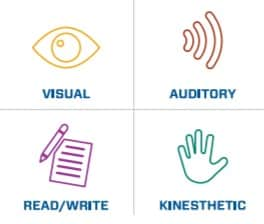Closing the Manufacturing Skills Gap: Develop a Well-Trained Team
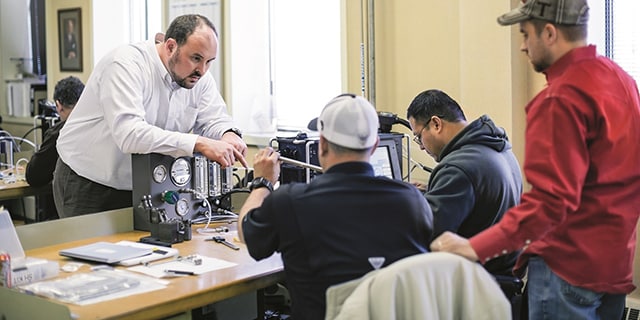
Closing the Manufacturing Skills Gap: Develop a Well-Trained Team
Andy Hitchcock, Product Manager, Global Services
Manufacturing plants all over the world are facing a growing challenge—highly-tenured employees nearing retirement, creating a manufacturing skills gap. For plant managers, this means finding a way to bring less experienced employees up to speed, particularly on key areas like fluid systems, before this deep pool of knowledge disappears.
In situations like this, formal training is an anchor strategy for maintaining a safe and efficient system into the future. But where do you start? Below, Swagelok’s global services team shares three steps for building an effective fluid system training program.
Step 1: Don’t Leave Anyone Out
While training new employees is often the priority, it is equally important to provide continuous learning opportunities for workers of all abilities and experience levels. Many employees not only seek training for their current role, but also education that readies them for increased responsibilities down the road. This means developing programs that cover everything from basic mechanical skills to in-depth system design principles. Giving employees multiple opportunities in these areas helps them chart their own course for career development. It is important to remember that your best fluid system technician today can become your sampling system expert tomorrow—if presented with the right opportunities for growth.
When deciding on a manufacturing training course, or evaluating a third-party’s program, look for ones that have comprehensive offerings that will meet the varied needs of your workforce. For fluid systems training, find a program that offers essential skill-building courses for less experienced workers, as well as advanced and specialty courses. With a broader program, newer employees can hone their basic tube-fitting installation, tube bending, and valve selection skills, while current employees in more specialized roles can delve deeper into topics such as sampling system design and maintenance, material selection, and process analyzer sampling system operations.
Keep in mind that the most effective training programs address multiple learning styles and include a mix of classroom work and practical application. Scientists and psychologists often identify four primary learning styles: visual, auditory, reading and writing, and kinesthetic. Ensure your training program incorporates opportunities for every kind of learner to actively engage each one of your employees.
Tip: Don’t forget about the knowledge you already have in your plant as a resource for closing the manufacturing skills gap. Your more experienced workers can take leading roles in the execution, planning or even instructing of a training program.
Step 2: Look for Experienced Instructors
The instructor is the architect of your training program. A good rule of thumb is to look for instructors who have spent time working in the field alongside engineers, mechanics, technicians, maintenance superintendents, and operations personnel. Your employees will be able to spot an inexperienced instructor immediately. The instructor must also have intimate knowledge of the daily challenges your employees face to provide them with useful tools and information they can apply in their everyday work environment. For example, instructors experienced with process and/or analytical instrumentation systems can bring important insights into maintaining these often-challenging systems.
Here are some key questions that can help determine whether a prospective manufacturing training provider is the right one for you in closing your manufacturing skills gap:
- Does the training provider have a reputation for quality and training? Do they have references and testimonials?
- Does the instructor have field experience?
- Is the instructor an experienced trainer with strong facilitation skills?
- Can the instructor teach employees at various skill levels?
- Does the course include a mix of theoretical and practical training techniques?
- What tools will be provided for ongoing learning and reference at the end of the course?
- Can the training provider customize a program for your plant?
Tip: Ultimately, experience is what separates a novice instructor from a professional who will quickly earn the respect of your employees. Great instructors can offer relatable stories and real-life scenarios that will help keep your employees engaged in the training. Learn more about how to find the right trainer for your needs in this article.
Step 3: Manage the “Forgetting Curve”
Effective training does not end with one course. It is a continuous process. People tend to lose nearly half their newly learned knowledge in a matter of days if they’re not applying or actively reviewing the information. This phenomenon is called the “forgetting curve.” To help mitigate this, effective training programs include follow-up courses, online tools, retraining opportunities, and reference guides to help reinforce learnings. Look for instructors and training facilitators willing to make themselves available after the initial training for those seeking further assistance.
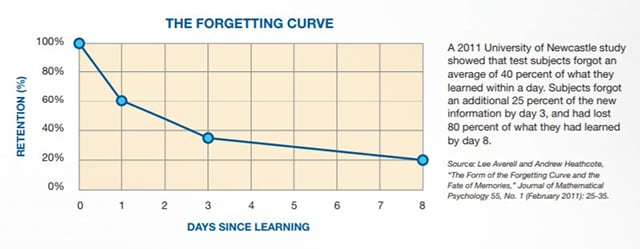
Tip: We recommend a brief refresher from Swagelok fluid system component training courses for anyone not using their skills on a regular basis, as well as anyone who hasn’t attended a course in the past three years.
Continuous Education: A Solid Foundation for Closing the Manufacturing Skills Gap
The efficiency of your business and the safety of your operations are dependent upon your workforce being properly trained in all facets of your plant. For the design and maintenance of fluid systems, that means implementing training programs that cover everything from basic to advanced skills; teaching – and reinforcing – fundamental skills to ensure your team knows how to minimize leaks, downtime, and maintenance needs; and delving deeper into fluid system design principles to realize streamlined operations from well-trained engineers.
From proper installation and maintenance of components to addressing common safety concerns, having the right training program in place can lead to smoother operations, lower costs, higher employee engagement, and increased profitability.
Ready to start building your manufacturing training program? Learn more about training offerings from Swagelok or contact your local Swagelok sales and service center.
Related Blogs

Five Reasons to Take Advantage of Virtual Training
With travel and visitor restrictions in place, a leading Australian gas supplier turned to Swagelok to provide essential tube fitting and installation training in a virtual format. Find out the top five benefits the company has reported so far.
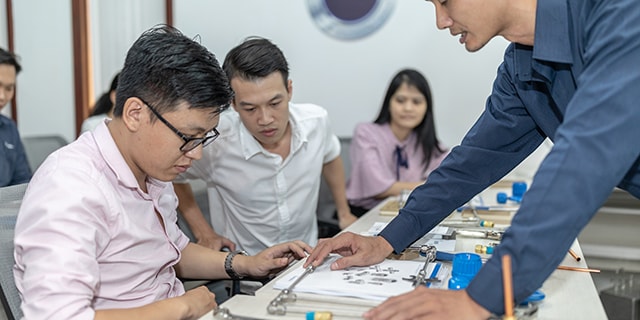
Fluid System Training: Is Your Trainer Trained?
Fluid system training is critical in oil and gas applications around the world. Learn more about how to evaluate the right training opportunities from Swagelok.
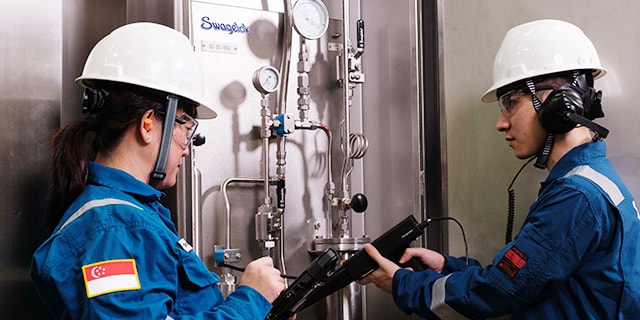
Four Ways Training and Advisory Services Can Help You Bridge the Skills Gap
Learn how fluid system training and advisory services can help operators bridge a growing skills gap across several industries.


